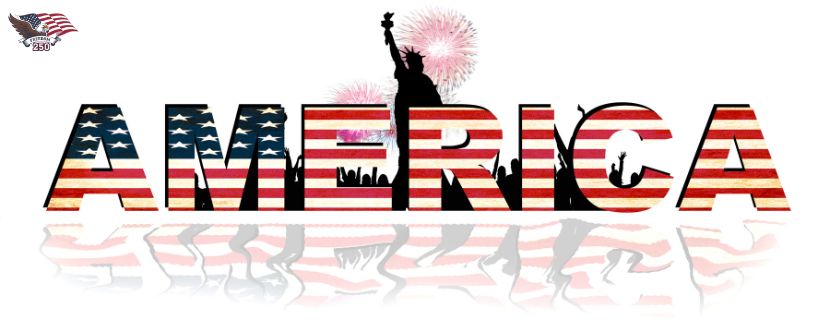Your cart is currently empty!

10 Facts You Didn’t Know About the Declaration of Independence
History buffs and casual patriots alike think they know the story of America’s founding document. Yet beneath the surface of this revolutionary text lie fascinating stories that rarely make it into textbooks. As we approach the 250th anniversary of American independence in 2026, it’s the perfect time to explore some lesser-known aspects of this cornerstone of liberty. The Declaration of Independence represents not just the birth of a nation, but a pivotal moment in human history when the radical notion of self-governance took center stage. Beyond the famous phrases and familiar signatures lie surprising secrets, personal dramas, and hidden symbols that make this document even more remarkable than most Americans realize.
1. The Declaration Wasn’t Signed on July 4th
Contrary to popular belief, the Declaration of Independence wasn’t signed on July 4th, 1776. Congress approved the final text on that date, but the actual signing ceremony took place nearly a month later on August 2nd. Some delegates signed even later, and some who voted for independence never signed at all. The Fourth of July commemorates the adoption of the document’s text, not its signing.
When we celebrate Independence Day, we’re actually honoring the day Congress approved Thomas Jefferson’s words—not when our founding fathers put quill to parchment. The formal signing ceremony on August 2nd included most of the delegates, but some were absent and added their signatures later. Elbridge Gerry, Oliver Wolcott, and several others signed after August 2nd, while some delegates who voted for independence, like John Dickinson, never signed the declaration at all.
2. Thomas Jefferson Didn’t Write It Alone
While Thomas Jefferson is credited as the principal author of the Declaration of Independence, he didn’t create it in isolation. The Continental Congress appointed a “Committee of Five” that included Jefferson, John Adams, Benjamin Franklin, Roger Sherman, and Robert Livingston to draft the document. Jefferson produced the first draft, but his colleagues suggested numerous revisions before presenting it to Congress.
Franklin, in particular, made several significant edits that strengthened Jefferson’s prose. When Jefferson wrote “We hold these truths to be sacred and undeniable,” it was Franklin who suggested the more powerful phrase “We hold these truths to be self-evident.” Congress then made additional changes, removing about a quarter of Jefferson’s original text, including a passionate paragraph condemning slavery.
3. A Woman May Have Influenced Its Most Famous Phrase
Recent scholarship suggests that Abigail Adams, wife of John Adams, may have influenced one of the declaration’s most famous phrases. In letters to her husband, she advocated for women’s rights using language strikingly similar to what appeared in the final document. Her famous plea to “remember the ladies” came just months before Jefferson drafted the declaration, potentially influencing the inclusive language of “all men are created equal.”
Though the declaration’s framers didn’t extend equal rights to women or enslaved people at the time, Abigail’s influence represents the first ripples of what would become powerful movements for universal human rights in America. The Declaration of Independence contained principles that would ultimately be used to argue for the rights of all people, regardless of gender or race.
4. The Original Document Is Barely Visible Today
If you visit the National Archives to see the Declaration of Independence, you might be disappointed by how faded it appears. The document wasn’t always handled with proper archival care. For decades, it was displayed in direct sunlight, resulting in significant deterioration. Today, only about 36 percent of the text remains legible on the original parchment.
The declaration spent its early years being transported during the Revolutionary War to protect it from British capture. Later, it hung for years in the Patent Office exposed to sunlight and fluctuating temperatures. By the late 1800s, the document had already faded significantly. Modern conservation techniques now protect what remains, but the most famous American document is largely illegible to the naked eye.
You may also read :- The Ultimate Guide to Bottle Opener Key Chains: Practical Patriotism in Your Pocket
5. There Are Secret Messages on the Back
On the reverse side of the Declaration of Independence, there appears a mysterious inscription: “Original Declaration of Independence dated 4th July 1776.” No one knows for certain who wrote this or exactly when. Another intriguing detail: the document was likely rolled for storage during its early years, not folded as commonly depicted in films like “National Treasure.”
Unlike the movie’s fictional treasure map, the actual writing on the back of the Declaration of Independence is mundane—simply a filing note. However, it remains a mystery who added this inscription and when. Archivists believe it was probably added when the document was stored in the years following the Revolutionary War, but no definitive records exist about this curious addition.
6. The Declaration Wasn’t Always Revered
The Declaration of Independence wasn’t always treated as a sacred text. In the early years of the republic, Americans celebrated Independence Day to commemorate the event of independence, not specifically to honor the document itself. It wasn’t until the 1820s that the declaration began to take on its current revered status. Before that, many saw it as simply a necessary wartime measure rather than a timeless statement of principles.
By the time of the document’s 50th anniversary in 1826, Americans had begun to venerate the declaration as something greater than a mere political proclamation. Remarkably, both Thomas Jefferson and John Adams died on that same day—July 4, 1826—exactly 50 years after the declaration was adopted, adding to its mystique and perceived significance.
7. Jefferson Used a Curious Writing Desk
Thomas Jefferson drafted the Declaration of Independence on a portable writing desk of his own design. This small lap desk, made of mahogany and pine, featured a hinged writing surface and a drawer for storing writing implements. Jefferson cherished this desk throughout his life and later gifted it to his grandson, who donated it to the American people.
Today, Jefferson’s portable desk resides in the Smithsonian’s National Museum of American History. When he gave the desk to his grandson, Jefferson included a note describing it as “the little desk on which I wrote the Declaration of Independence.” This intimate connection to the physical creation of the document offers a tangible link to that momentous moment in American history.
8. The Declaration Contains 56 Signatures, Not 55
While many Americans know the declaration contains numerous signatures, the exact count sometimes causes confusion. The document bears 56 signatures, not 55 as sometimes mistakenly cited. These signatures vary dramatically in size and style, from the famously large signature of John Hancock to the more modest markings of others.
John Hancock, as President of the Continental Congress, signed first and most prominently in the center. According to popular legend, he wrote his name larger than the others so that King George III could read it without his spectacles. Whether this story is true or not, Hancock’s bold signature has become synonymous with the very act of signing one’s name.
9. There Are Multiple “Original” Copies
The handwritten parchment in the National Archives is the official Declaration of Independence, but it isn’t the only “original” version. On the night of July 4th, 1776, printer John Dunlap produced about 200 broadside copies of the declaration that were distributed throughout the colonies. Only 26 of these “Dunlap broadsides” still exist, and they represent the first published versions of the declaration.
In January 1777, Congress commissioned an official printed version with all the signatures arranged exactly as they appear on the parchment copy. This version, created by Baltimore printer Mary Katherine Goddard, marked the first time the signers’ names were publicly displayed, as the earlier Dunlap broadsides had been published anonymously. Only nine copies of the Goddard broadsides are known to survive today.
10. The Declaration Almost Included Anti-Slavery Language
In Jefferson’s original draft of the Declaration of Independence, he included a passage that condemned slavery, blaming King George III for forcing the slave trade upon the American colonies. This passage was removed during congressional editing, largely due to objections from southern delegates and those involved in the slave trade.
The irony of Jefferson himself being a slaveholder while writing about equality wasn’t lost on his contemporaries or on history. This deleted passage represents one of American history’s great contradictions—a freedom document written in part by enslavers. The principles expressed in the declaration would eventually help fuel abolition movements, even though the document itself didn’t directly address the institution of slavery in its final form.
The Living Legacy
As we approach America’s 250th birthday in 2026, these lesser-known facts about the Declaration of Independence remind us that our founding story is even richer and more complex than commonly portrayed. The declaration wasn’t just a break from Britain—it was the beginning of an ongoing experiment in self-governance that continues to evolve.
Understanding these hidden aspects of the Declaration of Independence doesn’t diminish its importance; rather, it humanizes the document and its creators. These were real people making momentous decisions in uncertain times, not mythic figures who knew their place in history. Their flaws, compromises, and aspirations are all part of the authentic American story.
The Declaration of Independence remains one of history’s most influential texts precisely because its core principle—that governments derive their just powers from the consent of the governed—continues to inspire freedom movements worldwide. As we discover more about its creation and meaning, we gain a deeper appreciation for both its revolutionary nature and its enduring relevance to our national conversation about liberty and equality.
You may also read :- The Evolution and Enduring Appeal of the American Baseball Cap
